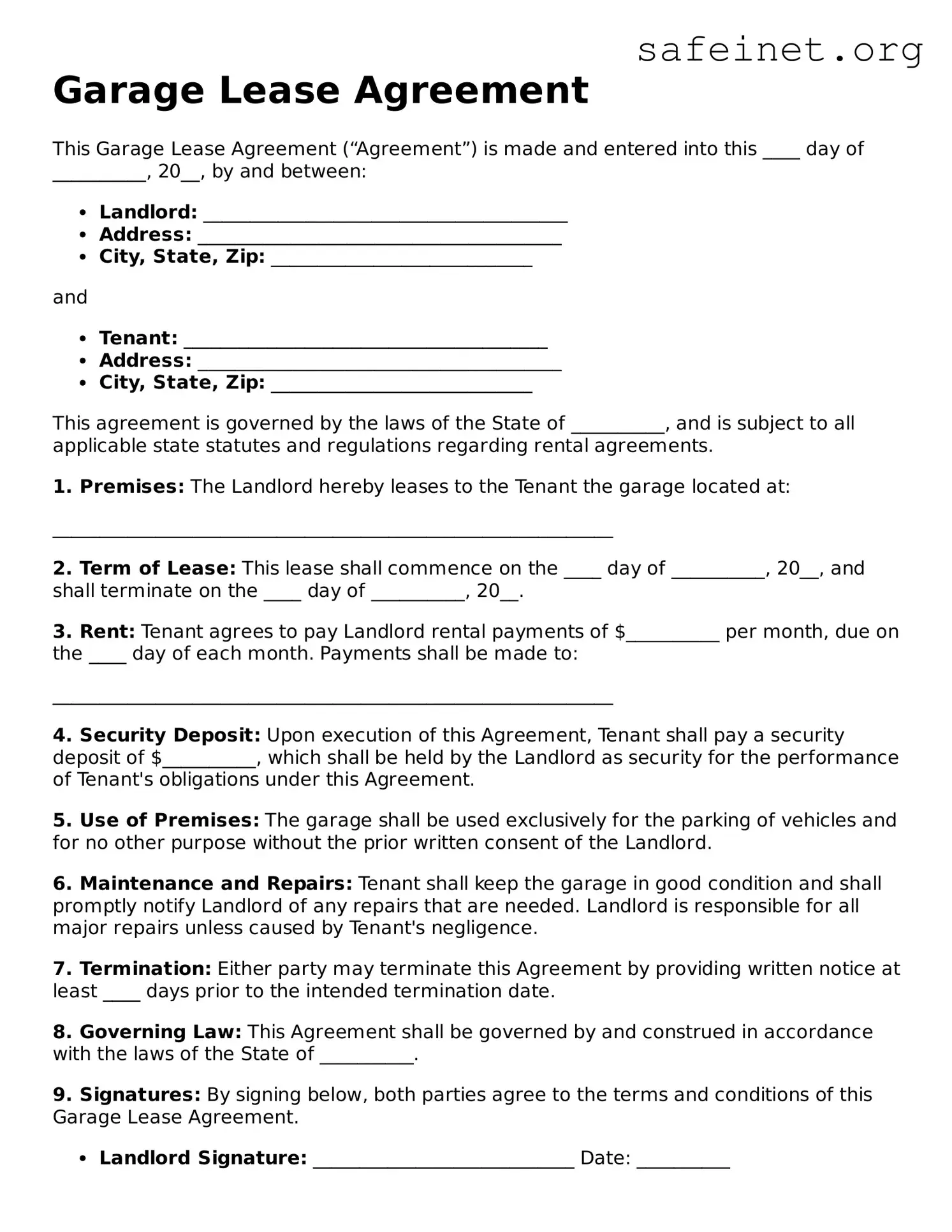Garage Lease Agreement
This Garage Lease Agreement (“Agreement”) is made and entered into this ____ day of __________, 20__, by and between:
- Landlord: _______________________________________
- Address: _______________________________________
- City, State, Zip: ____________________________
and
- Tenant: _______________________________________
- Address: _______________________________________
- City, State, Zip: ____________________________
This agreement is governed by the laws of the State of __________, and is subject to all applicable state statutes and regulations regarding rental agreements.
1. Premises: The Landlord hereby leases to the Tenant the garage located at:
____________________________________________________________
2. Term of Lease: This lease shall commence on the ____ day of __________, 20__, and shall terminate on the ____ day of __________, 20__.
3. Rent: Tenant agrees to pay Landlord rental payments of $__________ per month, due on the ____ day of each month. Payments shall be made to:
____________________________________________________________
4. Security Deposit: Upon execution of this Agreement, Tenant shall pay a security deposit of $__________, which shall be held by the Landlord as security for the performance of Tenant's obligations under this Agreement.
5. Use of Premises: The garage shall be used exclusively for the parking of vehicles and for no other purpose without the prior written consent of the Landlord.
6. Maintenance and Repairs: Tenant shall keep the garage in good condition and shall promptly notify Landlord of any repairs that are needed. Landlord is responsible for all major repairs unless caused by Tenant's negligence.
7. Termination: Either party may terminate this Agreement by providing written notice at least ____ days prior to the intended termination date.
8. Governing Law: This Agreement shall be governed by and construed in accordance with the laws of the State of __________.
9. Signatures: By signing below, both parties agree to the terms and conditions of this Garage Lease Agreement.
- Landlord Signature: ____________________________ Date: __________
- Tenant Signature: ____________________________ Date: __________
